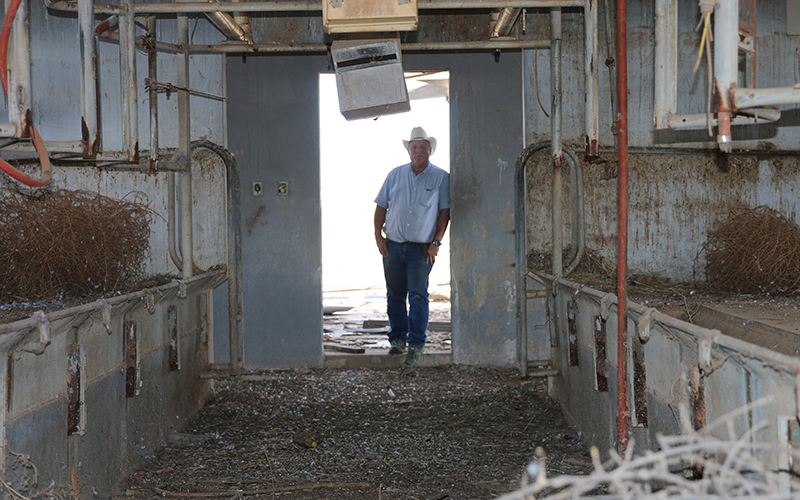
Cotton fields have decreased across the Phoenix area over the past two decades, to 43,000 acres from 300,000, according to Jerry Kerr, a field supervisor for the Arizona Cotton Research and Protection Council. (Photo by Kimberly Vardeman via Creative Commons)
PHOENIX – The pink bollworm has destroyed cotton crops in the United States for a century, but it now has been eradicated from cotton-producing areas in the Lower 48.
An undersecretary for the U.S. Department of Agriculture was in Arizona last month to celebrate the demise of the pink bollworm, which first invaded Texas from northern Mexico in 1917, according to the USDA.
The insect eventually spread to Arizona. Pink bollworm has been the No. 1 cotton pest for generations, said Kevin Rogers, executive vice president of the Arizona Cotton Growers Association.
“In the past, we’ve spent upwards of $25 million a year trying to keep that pest at bay,” he said.
Adult pink bollworms lay eggs on cotton bolls; once hatched, the larvae eat the cotton seeds and damage the fibers, reducing yield and quality, according to the USDA.
The eradication program took effect in the late 1990s, and cotton farmers taxed themselves to help pay for it, Rogers said.
“Cotton growers were critical to this success, banding together to carry out a coordinated, multistate program and shouldering 80 percent of the program’s cost,” Secretary of Agriculture Sonny Perdue said in a statement.
After the pest’s elimination, the USDA removed some restrictions on the domestic and international movement of U.S. cotton.
Cotton is one of Arizona’s “Five Cs” (the others are copper, citrus, cattle and climate). Cotton is grown on 200,000 acres in Arizona, Rogers said. That’s down significantly from the 800,000 acres once in production, according to ArizonaExperience.org, a resource the state created to celebrate Arizona’s centennial. Pinal County is the leading cotton producer, followed by Maricopa.
“So we’ve seen the acres decrease some over time,” Rogers said. “But then we see them surge back up as the market shows more demand and the price goes back up.”
Eradicating the pink bollworm is an opportunity for more Arizona farmers to grow cotton, Rogers said. But like with any other crop, the market will drive what farmers plant.
This story is part of Elemental: Covering Sustainability, a multimedia collaboration between Cronkite News, Arizona PBS, KJZZ, KPCC, Rocky Mountain PBS and PBS SoCal.
Follow us on Instagram.
